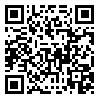Volume 22, Issue 64 (3-2022)
jgs 2022, 22(64): 201-227 |
Back to browse issues page
Download citation:
BibTeX | RIS | EndNote | Medlars | ProCite | Reference Manager | RefWorks
Send citation to:



BibTeX | RIS | EndNote | Medlars | ProCite | Reference Manager | RefWorks
Send citation to:
Motamedi M, Fakhar Z. (2022). Investigating and Analyzing the Formation and Evolution of Songhor City in Islamic Periods. jgs. 22(64), 201-227. doi:10.52547/jgs.22.64.201
URL: http://jgs.khu.ac.ir/article-1-3538-en.html
URL: http://jgs.khu.ac.ir/article-1-3538-en.html
1- University, azad university
2- University, azad university ,z.fakhar783@gmail.com
2- University, azad university ,
Abstract: (8062 Views)
The present article is an analysis of the formation and evolution of the city of Songhor in Islamic times. This research is descriptive-analytical in terms of purpose and method. And to collect the required data and information, library-documentary studies and field visits (observation, testing and interviewing) were used. Among the archaeological evidence and historical documents examined in this study include: pottery, gravestones of medieval Islamic times, religious and non-religious architecture, and springs and sanctuaries. Its field data is recorded and classified by time period. Reading and reviewing historical and archeological information related to the city of Songhor reveals the cultural and historical identity of the city during the Islamic period. The results show that Songhor city is based on fundamental elements such as: the mosque, government building, monuments, traditional market, neighborhoods and city fence which during Islamic history are related to specific hierarchy in relation to social, economic needs. Religious, political and city fix
they did. The presence of these elements in the city has made historical references to the city of Songhor with the names such as "Velayat and Fence", "Mahal", "Alkai" and "Qasaba".
Type of Study: Research |
Subject:
Geography and Urban Planning
Send email to the article author
| Rights and permissions | |
 |
This work is licensed under a Creative Commons Attribution-NonCommercial 4.0 International License. |

This work is licensed under a Creative Commons — Attribution-NonCommercial 4.0 International (CC BY-NC 4.0)





